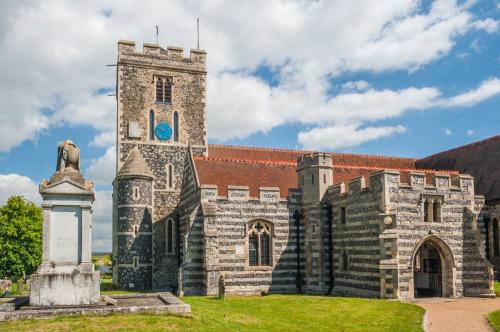
Cliffe is a village on the Kent side of the Thames marshes, looking across the river towards Southend-on-Sea in Essex. Though a village today, Cliffe was once a Saxon town, and the impressive 13th-century parish church of St Helen hints at Cliffe's early importance.
History
The first church at Cliffe may have been built by King Offa of Mercia around AD 774, though there is some dispute about this.
Offa's church was dedicated to St Helen, a popular saint in Mercia. Helen was said to be the daughter of King Coel of Colchester, whose name is recalled in the popular nursery rhyme, Old King Cole.
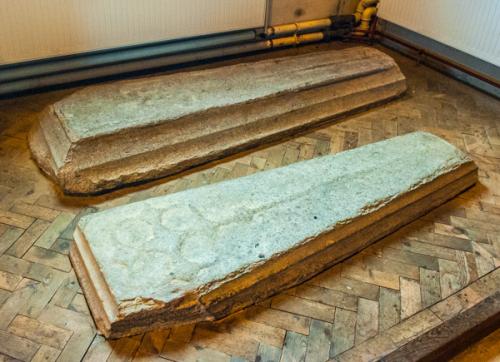
We do know that there was a church here at the time of the Domesday Book of 1086, and it must have been a church of some size and importance, for two priests were recorded.
The pre-Norman church was replaced in 1260 by the present building, constricted of local ragstone and flint. The scale of this imposing 13th-century building reflects the importance of Cliffe in the medieval period. St Helen's Church is one of the largest in Kent, and it is the only church in the county dedicated to St Helen.
The manor of Cliffe later passed to the Prior and Convent of Christ Church in Canterbury. The priory also held the right of advowson to St Helen's Church. Though title to the manor has long since passed into private hands, the Archbishop of Canterbury still holds the right of advowson for the church.
The church consists of an aisled nave with north and south transepts, a chancel, south porch, and west tower. The church measures 182 feet from east to west (internal measurement) and 82 feet across the transepts.
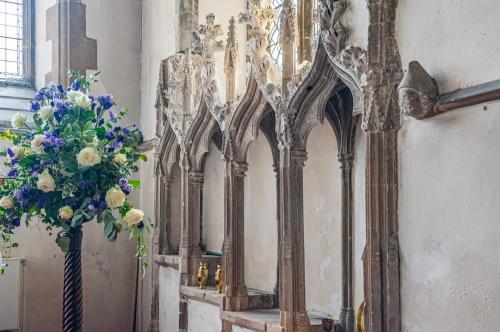
Historical Highlights
The first feature you notice is the large 15th-century south porch. This holds a chamber above the entry arch called a muniments room, which was used to store important documents such as charters and deeds.
The oldest internal feature is a 12th-century arch separating the north aisle and the transept. In the transept is a fragment of a medieval wall painting depicting St Edmund's martyrdom. Unfortunately, the painting suffers from a 20th-century attempt at restoration. There are further paintings in the south transept.
During the medieval period, the rector of Cliffe was a 'peculiar'; that is, he was not part of the normal church hierarchy and was answerable directly to the Archbishop of Canterbury. He held his own courts, using the north transept, where documents such as wills were approved. The rector had his own seal, which is on display at the Rochester Museum.
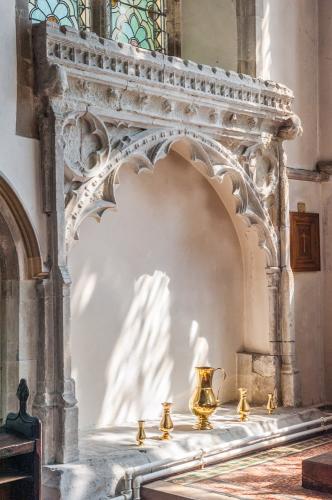
In the chancel is a wonderful example of a 14th-century triple sedilia, or clergy seat, linked to a piscina. The sedilia and piscina are under a beautifully-carved canopy decorated with crockets and ornate finials.
In the north wall of the chancel, opposite the sedilia, is a 14th-century tomb under an ornate niche. This tomb may have been used as an Easter Sepulchre.
Also in the chancel are some surviving medieval misericords and carved bench finials. one misericord features a woman's head, while another depicts a lion.
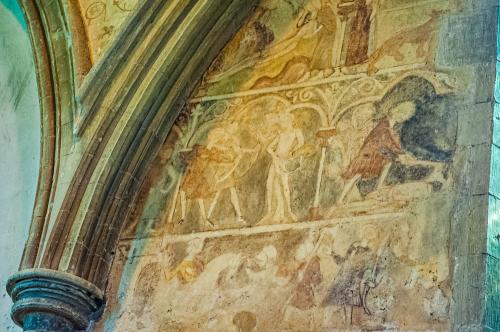
Set into the floor at the west end of the north aisle are a pair of 14th-century grave slabs with inscriptions in Lombardic French. The older of these two memorials is to Eleanor de Olive, while the later carved slab is to Joan Earn.
In addition to these two grave slabs there are three memorial brasses dating to the 17th century.
The pulpit was made in 1636 and is decorated with beautifully-carved arcading. It features a 17th-century hourglass to time sermons. The rood screen has a 15th-century base under a modern top.
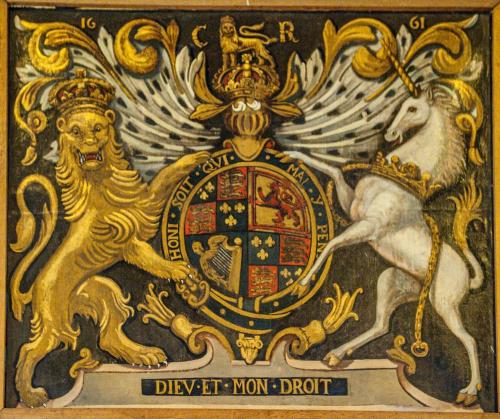
In a corner of the churchyard is a small 19th-century charnel house, a stone building used to store bodies found in the River Thames. Another external feature is a piscina and holy water stoup set into the north wall of the chancel. A blocked door from the chancel led to a small cell, now vanished, which may have been an anchorite's cell or, perhaps, a chantry chapel.
Visiting
There is a small car park immediately in front of the churchyard. The church is usually open four days a week and was open when we visited.
About Cliffe, St Helen's Church
Address: Buttway Lane,
Cliffe,
Kent,
England, ME3 7QP
Attraction Type: Historic Church
Location: At the end of Church Street (the B2000). There is a parking area in front of the church.
Website: Cliffe, St Helen's Church
Location
map
OS: TQ736766
Photo Credit: David Ross and Britain Express
HERITAGE
 We've 'tagged' this attraction information to help you find related historic attractions and learn more about major time periods mentioned.
We've 'tagged' this attraction information to help you find related historic attractions and learn more about major time periods mentioned.
Historic Time Periods:
Find other attractions tagged with:
14th century (Time Period) - Domesday Book (Historical Reference) - Offa (Person) - Saxon (Time Period) -
NEARBY HISTORIC ATTRACTIONS
Heritage Rated from 1- 5 (low to exceptional) on historic interest
Cooling, St James Church - 1.3 miles (Historic Church) ![]()
Higham, St Mary's Church - 1.9 miles (Historic Church) ![]()
Coalhouse Fort - 3.1 miles (Historic Building) ![]()
Upnor Castle - 4 miles (Castle) ![]()
Historic Dockyard Chatham - 4.9 miles (Museum) ![]()
Rochester Guildhall Museum - 4.9 miles (Museum) ![]()
Temple Manor - 5 miles (Historic Building) ![]()
Royal Engineers Museum - 5 miles (Museum) ![]()
Nearest Holiday Cottages to Cliffe, St Helen's Church:
Culverstone Green, Kent
Sleeps: 2
Stay from: £380 - 1071
More self catering near Cliffe, St Helen's Church











